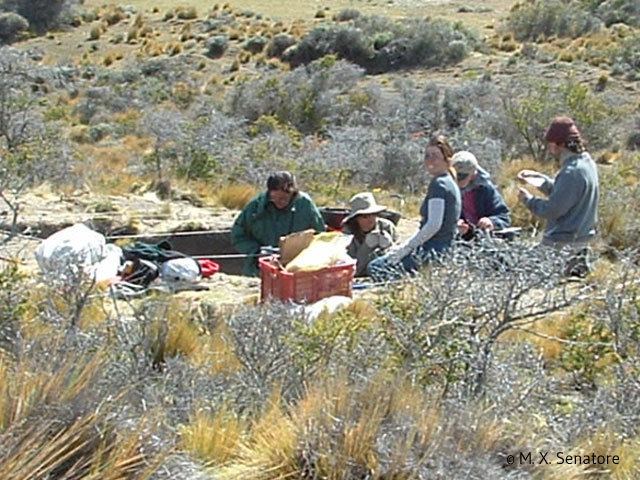 | ||
Nombre de Jesús was a Spanish town in Patagonia, settled in 1584 by Pedro Sarmiento de Gamboa in the Magellan Strait. Nombre de Jesús also refers to the archaeological site located in Santa Cruz Province, Argentina, where the remains of this settlement were found. This was the first European settlement in the Magellan Strait.
Contents
History
In 1581 King Philip II of Spain sent an expedition intended to fortify the Magellan Strait against Francis Drake's raids on the Spanish colonies. The colonizing fleet commanded by Diego Flores de Valdés and consisting of 23 ships and 3,000 men, sailed on September 25, 1581. Pedro Sarmiento de Gamboa was embarked as future governor of the Strait.
Five ships and 800 people were lost shortly after leaving Cadiz; 150 died at sea due to disease and 200 more at Rio de Janeiro where the expedition arrived on March 24. They sailed on November but at Rio de la Plata another ship sank during the night. Flores de Valdez decided to fall back to Brazil: a ship is lost near Don Rodrigo port, and a second one was damaged by Edward Fenton's fleet and sank arriving to Rio.
Nine remaining ships sailed from Santa Catalina on January 7, 1853: one of them was lost shortly at sea, and 3 caravels decided to head for the recently funded port of Buenos Aires. Five ships finally arrive to the Magellan Strait on February 1, 1583, two years after leaving Spain with 23 ships. However, due to the unfavorable conditions of the season, the expedition was unable to land. Demoralized, Flores de Valdes decided to return to Spain.
On their way back they met at Rio de Janeiro 4 caravels sent from Spain to reinforce the settlements they believed to be funded. At this point, Flores de Valdes and Sarmiento de Gamboa broke apart: the first would return to Spain with 3 ships, while Gamboa would take a second attempt at the strait with 6 ships and 538 settlers.
On February 4, 1584, after struggling at the coast 3 days, the expedition finally landed. 116 soldiers, 48 sailors, 58 settlers, 13 women and 10 children reached firm ground before a storm broke the moorings and 4 ships are pushed to the sea. After 10 days of trying to reach the coast, they gave up and returned to Spain. One ship sank and the other one survived the storm.
Sarmiento de Gamboa funded Nombre de Jesus on 11 February 1854. Most of the cannons were landed, and he mounted them facing the entrance of the strait. On foot, some of the settlers moved to a place near current day Punta Arenas and fund Ciudad del Rey Don Felipe.
Both settlements were governed by Gamboa, who moved guns and supplies between them on the surviving ship, the Santa Maria. Attempts of sublevation occurred, but were contained by Gamboa.
On May 26, Gamboa was aboard the Santa Maria near Nombre de Jesus when a storm broke and he was pushed by the strong winds to the Atlantic ocean. Gamboa struggled for a month to land again at the settlement, but conditions worsened as winter approached. He left for Rio in search of help, but he wouldn't find it. Gamboa was captured by Walter Raleigh at sea when heading to Spain, and after his release he fell prisoner of the French. By the time he got to Spain, 4 years later, it was already too late for the settlements.
Thomas Cavendish landed on Ciudad del Rey in 1587 and found that all the settlers had perished. From there on, the site would be known as Port Famine.
Historical archaeology
Despite numerous attempts to locate the remains of the settlement, the site was discovered only in 2003 by a research team funded by CONICET and headed by Dr. María Ximena Senatore of the University of Buenos Aires.
